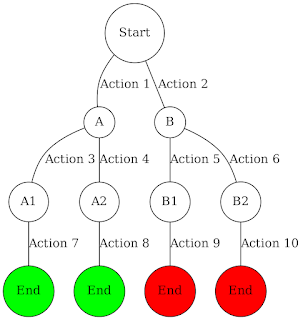Assignment Problem(3) - Steps to Solve using Branch and Bound

Example Assignment Problem Steps in Solving Solving the assignment problem with the branch and bound algorithm involves a systematic exploration of all possible assignments, aiming to find the least costly solution. Here are the general steps involved in solving the assignment problem using branch and bound: 1. Formulate the Problem: - Define the cost matrix where each element c[i][j] represents the cost of assigning the i-th worker to the j-th job. - Determine the objective, typically to minimize the total cost of assignments. 2. Initial Lower Bound: - Calculate an initial lower bound for the entire problem. This can be done by summing the minimum value from each row or each column of the cost matrix, depending on the strategy. 3. Create the Root Node: - Start with a root node representing an empty assignment (no workers are yet assigned to any jobs). 4. Branching: - For...



